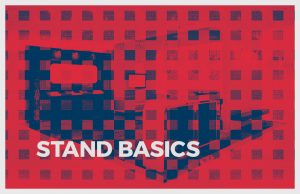Success on the exhibition floor: It’s all about location
LOCATION, LOCATION, LOCATION
Taking your business to a trade show is a big commitment. The overheads are large, the competition is fierce, and ensuring you achieve ROI is notoriously difficult. One of the largest challenges you’ll face is creating a space in this vast, busy exhibition space that looks and feels like yours, and which is engaging enough to coax people to come and talk to you instead of one of the many other businesses vying for their attention.
Getting your space right is key to a successful trade show experience, and thankfully it doesn’t have to be difficult. In the first of our guides on the subject, we’ll talk you through the best ways to make the most of your given location, how to plan your stand, and the features which will make it an approachable, workable space to meet new clients and build relationships.

Choosing your own spot
Hopefully when booking your place at your chosen exhibition, you’ll be given the opportunity to choose the spot where you’ll set up stall. With so many businesses competing against each other, getting the right location is incredibly important.
If you do have almost free reign over your positioning in the exhibition space, take a good look at the floor plan first. If possible, get hold of floor plans from previous iterations of the event too to give you an idea of where businesses similar to yours are usually based, and place yourself as close to your most captive audience as possible.
Choosing a side, corner or island plot is also an important decision, as each have their own advantages and disadvantages. Side plots make it easier to reuse stands at future exhibitions as there are more of them, while corner stands increase potential footfall as attendees tend to congregate at the end of aisles. Island plots give you complete 360° control over your stand, however it can then be difficult to manage flow of people to ensure everyone has been greeted and spoken to as your stand can be approached from every angle.
If it’s your first exhibition or you haven’t exhibited for a while, avoid taking too many risks. We’d suggest opting for a side plot within the vicinity of your competitors so you can share footfall, but not sandwiched between too many in case you’re overlooked for another stall.
Making do with a given spot
Sometimes, whether due to budget constraints, late booking or limited availability, you’ll be unable to choose a spot yourself and have to just work with what you’ve been given. While not ideal, this scenario at least takes the worry of ‘have I chosen the right position’ away from you, allowing you to concentrate on making the most of what you have.
Prior to designing your stand, make sure you’re fully aware of any limitations with your pre-determined spot, and take time to think how attendees will approach it and how you can turn issues into a virtue, not reason for potential customers to ignore your stand and move elsewhere. For example if your plot has limited floor space, speak to organisers about height restrictions and aim to make your space taller to give you more surface area to show off your brand and creativity.

While your brand will obviously influence the overall look and feel of your stand, there are still guiding principles which all successful exhibition stands adhere to.
First, focus on clarity. You want passersby to instantly be able to ascertain who you are, what you do, what your product or service is and how your offer will benefit them. This will mean that anyone who steps foot onto your stand will already have a good idea about who you are, which means that your first interactions can be more focused on the potential customer and their needs rather than who you are and what you do.
Secondly, you want your stand to perfectly encapsulate your brand. Think about your values, principles and brand positioning, and let that guide your design decisions. Brands that are big on heritage are unlikely to work well with clean-lined, contemporary looks, whereas modern innovative brands are more likely to shy away from leather and mahogany. You only have a second to make a good first impression, so you need to ensure that anyone who passes by your stand can instantly see the type of company you are, allowing your leads to self-qualify before they even step foot into your display area.

Once you’ve decided upon the look and feel for the floor, walls and (if applicable) ceiling of your stand, it’s time to work out how to fill it. The possibilities in this area are endless, with a host of furnishing options available to businesses of all sizes.
If you need a bit more help with designing your perfect exhibition stand, get in touch with our team who’ll be more than happy to help. Also, keep your eyes peeled in coming weeks, as we’ll reveal our top tips for attracting more people to your stand, and keeping them there once you’ve grabbed their attention.